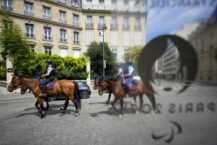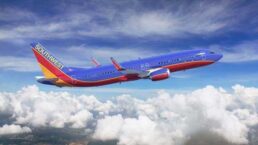No products in the cart.

This NASA technology could save US wine growers billions by detecting disease before it can be seen

Disease in wine grape crops can cost United States growers billions of dollars each year. Detecting the presence of a virus or bacteria can be costly, too and in some cases, visual signs of disease aren’t obvious until a year after an infection occurs. At that point, it can be too late to save the diseased vines.Scientists with NASA’s Jet Propulsion Laboratory and Cornell University recently proved that technology can help growers detect a specific type of infection before symptoms show up. Using artificial intelligence modeling along with a plane equipped with a special sensor, researchers use a method called image spectroscopy to see below the surface.NASA JPL research technologist Ryan Pavlick compares the technology to a high-powered camera.“Think about the camera that you have in your iPhone or Android in your pocket. It has a camera that sees in red, green and blue,” Pavlick said. “Our instrument has a sensor that can break up light into hundreds of colors.”Some of those colors fall in the infrared spectrum, which is invisible to the human eye. It’s within that band of colors that the sensor can detect the beginnings of a disease called Grapevine Leafroll virus. Scientists studied data for 11,000 acres of wine grapes in Northern California. They found that their imaging and modeling could predict disease with an 87% accuracy rate.“That would be much more cost-effective than what is being done now, which involves sending out highly trained human scouts to identify disease,” Pavlick said. Currently, a plane with the image spectroscopy instrument needs to be flown over vineyards to gather data. But later this decade, NASA plans to launch a satellite that will be capable of monitoring the health of grapes and other crops around the world in the same way while in orbit.”This will transform what we’re able to do from just flying over a few vineyards in Lodi to being able to map every vineyard in the United States every 16 days,” Pavlick said.That could potentially save growers a lot of time and money and it could save us a lot of wine.
Disease in wine grape crops can cost United States growers billions of dollars each year.
Detecting the presence of a virus or bacteria can be costly, too and in some cases, visual signs of disease aren’t obvious until a year after an infection occurs. At that point, it can be too late to save the diseased vines.
Advertisement
Scientists with NASA’s Jet Propulsion Laboratory and Cornell University recently proved that technology can help growers detect a specific type of infection before symptoms show up.
Using artificial intelligence modeling along with a plane equipped with a special sensor, researchers use a method called image spectroscopy to see below the surface.
NASA JPL research technologist Ryan Pavlick compares the technology to a high-powered camera.
“Think about the camera that you have in your iPhone or Android in your pocket. It has a camera that sees in red, green and blue,” Pavlick said. “Our instrument has a sensor that can break up light into hundreds of colors.”
Some of those colors fall in the infrared spectrum, which is invisible to the human eye. It’s within that band of colors that the sensor can detect the beginnings of a disease called Grapevine Leafroll virus.
Scientists studied data for 11,000 acres of wine grapes in Northern California. They found that their imaging and modeling could predict disease with an 87% accuracy rate.
“That would be much more cost-effective than what is being done now, which involves sending out highly trained human scouts to identify disease,” Pavlick said.
Currently, a plane with the image spectroscopy instrument needs to be flown over vineyards to gather data. But later this decade, NASA plans to launch a satellite that will be capable of monitoring the health of grapes and other crops around the world in the same way while in orbit.
“This will transform what we’re able to do from just flying over a few vineyards in Lodi to being able to map every vineyard in the United States every 16 days,” Pavlick said.
That could potentially save growers a lot of time and money and it could save us a lot of wine.




